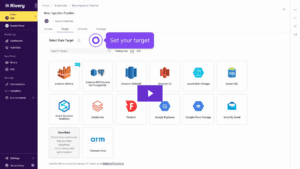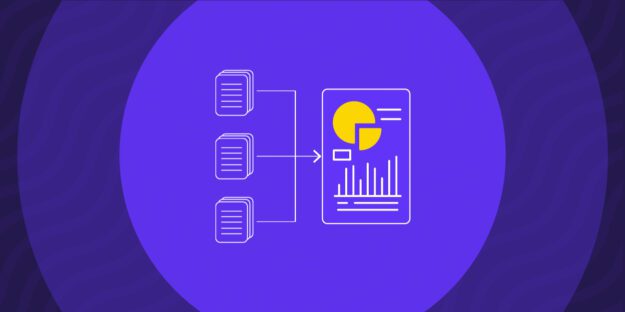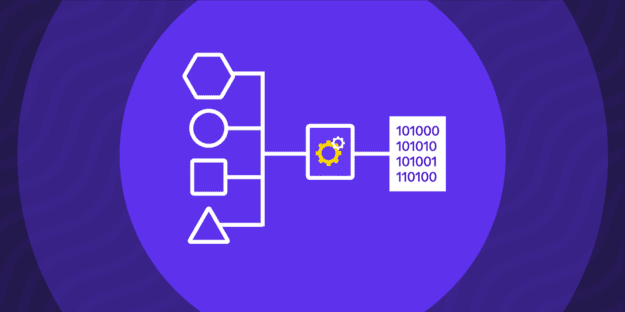Data pipelines are complex beasts, but they don’t have to be. By understanding the basics of data pipelines, you can break down the complexity and make them work for your organization.
Introduction to Data Pipelines
Imagine water flowing through pipes, traveling from its source to your tap. Data pipelines are just like that, but instead of carrying water, they carry data. Data pipelines are workflows built to collect, process, and store large amounts of data for analysis and decision-making.
In practice, they represent the processes of extracting the information you need from multiple sources, transforming it into a usable format, and loading it into your destination (e.g., data warehouse or data lake).
Data pipelines are crucial in improving data management processes by systematically handling data flow from its source to the final destination. They ensure not only the smooth transportation of data but also its transformation, cleaning, and enrichment along the way.
Data pipelines offer numerous advantages for businesses. Primarily, they enable automated and efficient data management. By doing so, they save time, reduce costs, and ensure the data is consistent, organized, and up-to-date. They enable businesses to leverage vast amounts of data effectively and form a crucial part of a data-driven strategy. As businesses continue to navigate the complex realm of data management, the role of data pipelines becomes increasingly essential to their operations.
Data Pipeline Definition
A data pipeline is a sequence of data management processes connected in series, where the output of one element is the input of the next. It’s designed to extract, transform, and load data from various sources to a destination.
Think of it like an assembly line: data pipelines take raw data, transform it into a usable form, and then put it in the right place for further analysis.
Data pipelines can be used for various purposes, such as data integration, data migration, or data analysis. They are designed to move data quickly and efficiently from a source to a target destination, which can be further processed or analyzed.
How Data Pipelines Work
Step 1: Ingest
Data pipelines begin with the ingestion of data from various sources. First, you must gather data from multiple sources such as databases, files, or web APIs. The data itself could be structured or unstructured, including logs, forms, social media posts, or sales transactions.
Step 2: Transform
Next, this data is transformed into the desired format and structure that fits the target system. This stage may involve cleaning up and normalizing the data by removing duplicates or inconsistencies, converting it from its raw form to a table-like format, or aggregating it into summary statistics.
Step 3: Load
Finally, the processed data is loaded into a destination such as a database or data warehouse.
Types of Data Pipelines
Data pipelines are multifaceted, each serving unique functions within a data management ecosystem. A data pipeline’s design and characteristics can be differentiated along several core dimensions:
- Function: The primary task or purpose of a pipeline. For instance, ETL and ELT pipelines specialize in data transformation and loading, while AI/ML pipelines are designed to prepare and feed data into machine learning algorithms.
- Complexity: This dimension addresses the intricacy of data management tasks handled by the pipeline. Certain pipelines, such as streaming pipelines or those adhering to Lambda and Kappa architectures, can tackle more complex tasks, encompassing real-time processing, batch handling, and treating all data as a continual stream.
- Processing Latency: This aspect focuses on the speed and frequency of data processing. While some pipelines, like batch processing ones, deal with data at predetermined intervals, others, such as real-time and streaming pipelines, process data instantly upon receipt.
- Data Volume: This dimension is concerned with the capacity of the pipeline to handle data. Certain pipelines, particularly cloud-based pipelines, and big data pipelines, are engineered to efficiently manage substantial volumes of data.
- Data Source Diversity: This refers to the variety of data sources that a pipeline can support. Some pipelines are capable of ingesting data from a wide range of sources including databases, files, APIs, message queues, or even real-time data streams. Some are designed to move data from a single source to a single destination.
- Fault Tolerance and Reliability: The ability of the pipeline to handle errors or system failures without losing data or causing significant downtime. It includes features like data replication, automatic retries, checkpointing, and dead-letter queues.
- Scalability: The ability of the pipeline to scale to handle increases in data volume or complexity. Some pipelines are designed to automatically scale up resources when required, and scale them down when they’re no longer needed, which can lead to significant cost savings.
- Security and Compliance: This dimension covers the capabilities of the pipeline in protecting data and ensuring compliance with regulations like GDPR or HIPAA. It may involve features like data encryption, access controls, auditing, and anonymization.
- Data Quality Assurance: This involves features for ensuring that the data processed by the pipeline is accurate, reliable, and usable. It may include data validation, cleaning, and enrichment functions, as well as monitoring and alerting features for detecting data quality issues.
- Data Lineage: This refers to tracking where the data came from, how it was processed, and where it’s been stored. It’s important for troubleshooting issues, understanding the impact of changes, and ensuring compliance with regulations.
Let’s delve into some of the prominent types of data pipelines prevalent in today’s data landscape.
Common Types of Data Pipelines
It’s important to note that a specific pipeline may serve multiple functions and could potentially fit into more than one group, depending on its configuration and usage.
Batch Processing Pipelines vs. Real-Time Pipelines
These pipelines primarily focus on the dimension of “Processing Latency,” but they approach it in opposite ways:
| Batch Processing Pipeline | Real-Time Pipeline | |
| Description | Processes data in large, predetermined intervals. | Processes data as soon as it enters the system, allowing for immediate insights. |
| Use Cases | Useful when real-time data isn’t necessary, like for daily sales reports or monthly customer churn analysis. | Ideal for stock market analytics, real-time fraud detection, social media monitoring, and live traffic updates. |
| Key Benefits | Handles large data sets; it’s efficient and cost-effective for non-time-sensitive data. | Provides instant insights; enables quick decision-making based on real-time data. |
ETL vs. ELT Pipelines
ETL (Extract, Transform, Load) and ELT (Extract, Load, Transform) pipelines primarily focus on tasks involving data extraction, transformation, and loading:
| ETL Pipeline | ELT Pipeline | |
| Description | Extracts data from sources, transforms it into a suitable format and loads it into a data warehouse. | The raw data is loaded into the system first, and then transformations are performed. |
| Use Cases | Perfect for business intelligence scenarios, data warehousing, where data from various sources needs to be consolidated, transformed, and stored for later use. | A better fit for big data applications, like Hadoop or Spark, modern cloud-based data warehouses with high processing capabilities, and when you need raw data available in your target system for more flexible and ad hoc analysis. |
| Key Benefits | Ensures data consistency, quality, and conformity; supports complex transformations, reduces the computational load on the target system; BI tools often work better with clean and transformed data. | Suited for large data sets & Big Data, transformation after loading utilizes the processing power of modern data warehouses (like Redshift, BigQuery, or Snowflake) and allows for “schema on read.” |
Streaming, Lambda, and Kappa Architecture Pipelines
These pipelines primarily deal with real-time or near-real-time data processing, particularly from continuous or streaming data sources.
| Streaming Pipeline | Lambda Architecture Pipeline | Kappa Architecture Pipeline | |
| Description | Specifically designed for continuous, streaming data and can provide real-time or near-real-time insights. | A hybrid model with two layers: the speed layer (dealing with real-time data) and the batch layer (processing large batches of historical data). | A model that treats all data as a stream, simplifying the pipeline architecture. |
| Use Cases | IoT sensor data processing, live transaction processing, real-time analytics. | Applications where both real-time and historical data analysis are needed (e.g fraud detection) | Real-time analytics, log data processing, and other streaming data scenarios. |
| Key Benefits | Efficient processing of real-time data; provides continuous insights. | Combines the benefits of batch and real-time processing; versatile and comprehensive. | Simplifies the data architecture; efficient processing of streaming data. |
Data Warehouse, AI/ML, and Data Integration Pipelines
These pipelines are commonly used in situations that require consolidating data from multiple sources, transforming the data, and preparing it for specific analysis or usage.
| Aspect | Data Warehouse Pipeline | AI/ML Pipeline | Data Integration Pipeline |
| Description | Designed to feed data into a centralized repository (a data warehouse) where it is stored, managed, and analyzed. | Processes and feeds data into machine learning algorithms for training and prediction. Often includes steps for data cleaning, feature extraction, and normalization. | Gathers data from different sources, cleans and standardizes it, and combines it into a cohesive, unified format. |
| Use Cases | Businesses that require a central repository to store and analyze their data. | Use cases that involve predictive modeling, machine learning, or artificial intelligence. For example, customer behavior prediction, fraud detection, and recommendation engines. | Situations where data from various sources need to be consolidated and unified for analysis. For example, creating a 360-degree customer view by integrating CRM, sales, and support data. |
| Key Benefits | Centralizes data for easy access and analysis; often combines ETL and ELT aspects. | Automates data preparation for machine learning; enables predictive analytics. | Ensures data consistency across sources; provides a unified view for analysis. |
Big Data and Cloud-Based Pipelines
These pipelines are designed to handle large volumes of data, often leveraging modern, scalable infrastructures such as big data technologies or cloud platforms.
| Big Data Pipeline | Cloud-Based Pipeline | |
| Description | Designed to handle massive volumes of data, often utilizing big data technologies. such as Hadoop and Spark. | Hosted on cloud platforms, offering benefits like scalability, cost-effectiveness, and access to advanced analytic tools. |
| Use Cases | Scenarios requiring the processing and analysis of high-volume, high-velocity, and high-variety data to extract timely insights. | When scalability is important or a need to quickly deploy applications and manage data in real-time without maintaining in-house servers. |
| Key Benefits | Handles vast data volumes efficiently; enables processing and analysis of big data. | Scalable, cost-effective; enables access to advanced cloud services. |
Benefits of Data Pipelines
Data pipelines play a critical role in modern data management ecosystems, enabling organizations to efficiently process, transform, and analyze vast amounts of data. Let’s explore the benefits of data pipelines in more detail:
- Effective Data Management: Data pipelines provide a structured approach for managing data, streamlining workflows, and ensuring data consistency. They enable integration, synchronization, and consolidation of data from disparate sources, reducing the risk of data silos and promoting efficient data governance.
- Time Savings: By automating data movement and transformation, data pipelines reduce the time required for data processing tasks. They handle large data volumes efficiently, leading to faster insights and more agile responses to business needs.
- Improved Decision-Making: Data pipelines ensure timely access to reliable data, facilitating data-driven decision-making. They enable real-time and near-real-time insights, allowing organizations to respond quickly to market trends and emerging opportunities.
- Improved Data Quality: Data pipelines can enforce data quality standards through built-in data cleansing and validation mechanisms. By proactively addressing data inconsistencies, inaccuracies, and duplicates, they enhance the reliability and trustworthiness of data, leading to more accurate and reliable analysis and decisions.
Implementing Data Pipelines
Data pipelines can be custom-built or implemented using SaaS or cloud-based services.
Successful implementation requires careful planning, following best practices, and continuous performance monitoring. To ensure successful implementation, organizations should follow a structured approach that encompasses key steps and considerations.
Best Practices for Data Pipeline Implementation
When implementing data pipelines in a business or organization, it is important to consider the technical requirements of the organization and the specific tasks that need to be completed. Additionally, several best practices should be followed to ensure successful data pipeline implementation
- Define Clear Goals: Understand the business needs and map out how the data pipeline will support them. Identify the various stakeholders involved in the process and ensure their needs are met. Consider the costs and timeline associated with the project.
- Define Objectives and Requirements: Understand what you want to achieve with the data pipeline and what requirements need to be fulfilled to do so.
- Identify and Integrate Relevant Data Sources: Identify the data sources that need to be a part of your pipeline and ensure they can be properly integrated.
- Design Data Transformation and Processing Steps: Plan out the transformations and processing that the data will undergo as it moves through the pipeline.
- Determine the Pipeline Architecture: Decide on the architecture that will best support your data processing needs, whether it’s batch processing, real-time processing, or a hybrid approach.
- Utilize Automation: Identify areas of the process that can be automated to maximize efficiency and save time.
- Implement Data Security and Compliance Measures: Ensure your data pipeline follows all necessary security protocols and complies with relevant regulations.
- Conduct Thorough Testing and Validation: Make sure to test your data pipeline under various conditions to ensure it functions as expected.
- Monitor Performance: Define how the pipeline will be monitored and maintained over time to ensure consistent performance.
- Document the Pipeline Design and Operational Procedures: Create detailed documentation of the pipeline’s design and how it should be operated, which can be useful for training, troubleshooting, and future development.
By following these best practices, businesses can ensure their data pipelines are reliable and efficient, enabling them to make more informed decisions and achieve greater success.
Conclusion: Importance of Data Pipeline Tools
Data pipelines play a crucial role in gathering, processing, and storing information for further analysis and strategic decision-making. However, creating a reliable data pipeline from scratch can be a daunting task, requiring specialized knowledge and significant time investment.
Most organizations lack the in-house resources or expertise necessary to construct custom data pipelines, leading to a reliance on inefficient, error-prone manual processes.
Luckily, there is a plethora of tools available on the market, each offering unique features to accommodate an organization’s specific needs and streamline its data pipelines.
In the era of data-centric operations, organizations need powerful solutions to effectively manage and leverage the full potential of their data assets.
Rivery, with its custom code or no-code approach, simplifies the intricacies of data pipelines. It allows organizations to easily connect with all their data sources, smoothly manage data workflows, and access information from various systems.
Rivery enables businesses to optimize their data pipelines and fully harness the power of their data, without the typical complexities and resource demands of traditional approaches.
Minimize the firefighting. Maximize ROI on pipelines.





